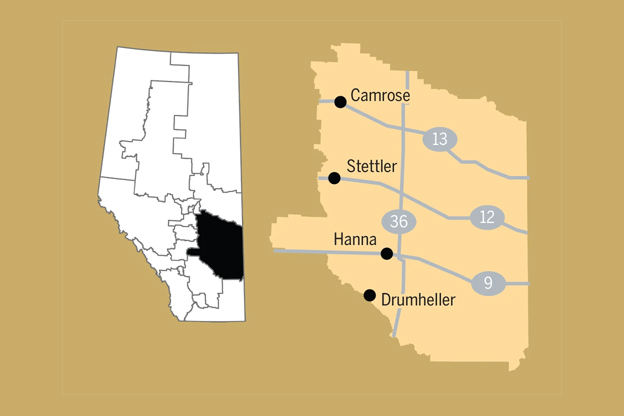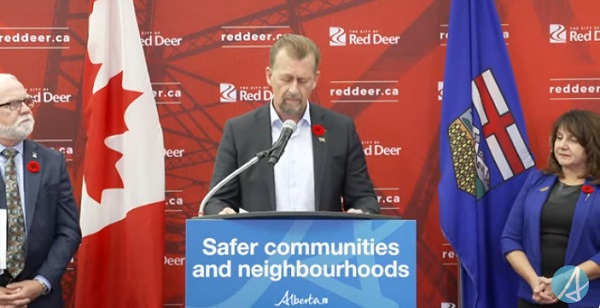Central Alberta
Success Stories: Health Basics got me started

I have been plus size for some time. When I was 4 months post-partum I talked to my doctor about how to adopt healthier lifestyle choices. I want to be healthy to raise my daughter and to set a good example for her. However, I had no idea where to start. My doctor recommended I attend the Health Basics workshop.
I started the workshop in the summer. I was already aware of most of the information I received but I was not applying it in my lifestyle. It was great to review all the good stuff I can do to be healthier and all the tips and tricks. I liked the weekly group check-in. We talked about what challenges we had this week and what went well. I knew someone would listen and help me to make better choices.
I would describe my present lifestyle as very good. I am now exercising more, losing weight, using all the meal preparation tips from Health Basics and I also joined Weight Watchers. My husband works out at the same time as me and has also made many positive changes to his food intake. I am so glad that I started my self-care journey with Health Basics. The small successes I achieve weekly make me feel more comfortable and motivate me to carry on.
To learn more about the RDPCN programs, visit www.reddeerpcn.com
Click to read more stories from the Red Deer Primary Care Network.
Alberta
Pierre Poilievre will run to represent Camrose, Stettler, Hanna, and Drumheller in Central Alberta by-election

From LifeSiteNews
Conservative MP-elect Damien Kurek announced Friday he would be willing to give up his seat as an MP so Pierre Poilievre, who lost his seat Monday, could attempt to re-join Parliament.
Conservative MP-elect Damien Kurek announced Friday he would be willing to give up his seat in a riding that saw the Conservatives easily defeat the Liberals by 46,020 votes in this past Monday’s election. Poilievre had lost his seat to his Liberal rival, a seat which he held for decades, which many saw as putting his role as leader of the party in jeopardy.
Kurek has represented the riding since 2019 and said about his decision, “It has been a tremendous honor to serve the good people of Battle River—Crowfoot.”
“After much discussion with my wife Danielle, I have decided to step aside for this Parliamentary session to allow our Conservative Party Leader to run here in a by-election,” he added.
Newly elected Prime Minister of Canada Mark Carney used his first post-election press conference to say his government will unleash a “new economy” that will further “deepen” the nation’s ties to the world.
He also promised that he would “trigger” a by-election at once, saying there would be “no games” trying to prohibit Poilievre to run and win a seat in a safe Conservative riding.
Poilievre, in a statement posted to X Friday, said that it was with “humility and appreciation that I have accepted Damien Kurek’s offer to resign his seat in Battle River-Crowfoot so that I can work to earn the support of citizens there to serve them in Parliament.”
“Damien’s selfless act to step aside temporarily as a Member of Parliament shows his commitment to change and restoring Canada’s promise,” he noted.
“I will work to earn the trust of the good people of Battle River-Crowfoot and I will continue to hold the Liberal minority government to account until the next federal election, when we will bring real change to all Canadians.”
Carney said a new cabinet will be sworn in on May 12.
Alberta
New Sheriffs unit to enhance public safety in Red Deer and Central Alberta

A new team of Alberta Sheriffs will work alongside police to keep crime out of central Alberta communities by targeting problem properties.
Since 2023, Alberta’s government has invested more than $27 million to help fight crime throughout the province. Building on these efforts, the government is now expanding the Alberta Sheriffs’ Safer Communities and Neighbourhoods (SCAN) unit with the creation of a new team of investigators in Red Deer. The creation of the Red Deer SCAN team is the latest in a series of measures aimed at enhancing public safety and increasing the Alberta Sheriffs’ ability to support police throughout the province.
The move puts more resources on the ground with a team of qualified experts who will investigate properties where illegal activity has been reported and shut them down through court orders when needed. The Red Deer SCAN team – made up of four Alberta Sheriffs – joins existing SCAN teams in Calgary, Edmonton, and Lethbridge, which have proven immensely effective in working alongside local police to shutter problem properties throughout the province.
“Alberta’s government will always maintain a zero-tolerance stance toward crime of any kind, and the expansion of the Alberta Sheriffs’ SCAN unit reflects that. With the creation of a new SCAN team in Red Deer, we’re expanding the unit’s coverage even further and putting more boots on the ground where they’re needed. Let this be a message to all criminals: you are not welcome here. Communities in the Red Deer area have a right not to be plagued by drug and other criminal activity that create dangerous environments, and Alberta’s government will do whatever it takes to keep people safe.”
The Sheriffs’ SCAN unit operates under the Safer Communities and Neighbourhoods Act, which uses legal sanctions and court orders to hold owners accountable for illegal activity happening on their property, such as drug trafficking, human trafficking and child exploitation. SCAN augments and supports local police to both investigate and close properties where evidence of criminal activity has been confirmed.
“Ensuring safety for law-abiding Albertans is of utmost importance for Alberta’s government and requires a comprehensive approach to effectively combat and prevent criminal activity. This involves enhancing law-enforcement resources, fostering community engagement, implementing crime prevention programs, and promoting collaboration between Alberta Sheriffs and local police. This SCAN team is a game-changer in central Alberta and puts criminals on notice that they are not welcome here.”
“The Safer Communities and Neighbourhoods Act holds property owners accountable for activities on their property that threaten public safety. Alberta’s SCAN teams support policing efforts by addressing illegal activities on these properties. This additional team will enhance RCMP community safety programs.”
When a community member reports a problem property to SCAN, the unit begins an investigation. Once the investigation confirms the activity, investigators contact the property owner to try and resolve the issue informally. If informal efforts are unsuccessful, SCAN can apply to the courts for a community safety order to impose restrictions and conditions on the property and its owner, which could include closing the property for up to 90 days. Any criminal activity uncovered when dealing with these properties is turned over to the police to investigate.
“Over the years, SCAN’s impact on community safety has been profound. More often than not, we see individuals in these problem properties carrying out drug operations and other criminal activities beside homes, schools, playgrounds and other places where Albertans’ safety should never be in question. Crime has no place in any Alberta neighbourhood, and we look forward to working with our policing partners in the Red Deer area to help keep central Alberta communities safe.”
SCAN continues to see tremendous success, having closed problem properties in Lethbridge, Calgary, Spruce Grove and Medicine Hat in the last six months alone. Since May 2024, Alberta’s government has publicly announced the closure of seven problem properties by SCAN, including three in Calgary, two in Lethbridge, and one each in Spruce Grove and Medicine Hat.
“Creating a safer environment for our citizens improves the overall quality of our community in Red Deer. I would like to take this opportunity to thank Alberta’s government, SCAN and all our law enforcement partners who work tirelessly every day to keep our communities safe. This is great news for the City of Red Deer, and together, we can make our community safer. I encourage residents to report any suspicious activity to the SCAN unit.”
The Red Deer SCAN team’s operational boundaries encompass the city of Red Deer and its surrounding communities and rural areas, providing coverage to the central area spanning Ponoka to the north and Olds to the south.
-

 Business2 days ago
Business2 days agoOttawa Funded the China Ferry Deal—Then Pretended to Oppose It
-

 COVID-192 days ago
COVID-192 days agoNew Peer-Reviewed Study Affirms COVID Vaccines Reduce Fertility
-

 MAiD2 days ago
MAiD2 days agoCanada’s euthanasia regime is not health care, but a death machine for the unwanted
-

 Alberta2 days ago
Alberta2 days agoThe permanent CO2 storage site at the end of the Alberta Carbon Trunk Line is just getting started
-

 Business1 day ago
Business1 day agoWorld Economic Forum Aims to Repair Relations with Schwab
-

 Alberta1 day ago
Alberta1 day agoAlberta’s government is investing $5 million to help launch the world’s first direct air capture centre at Innisfail
-

 Business2 days ago
Business2 days agoMunicipal government per-person spending in Canada hit near record levels
-

 Business1 day ago
Business1 day agoA new federal bureaucracy will not deliver the affordable housing Canadians need






